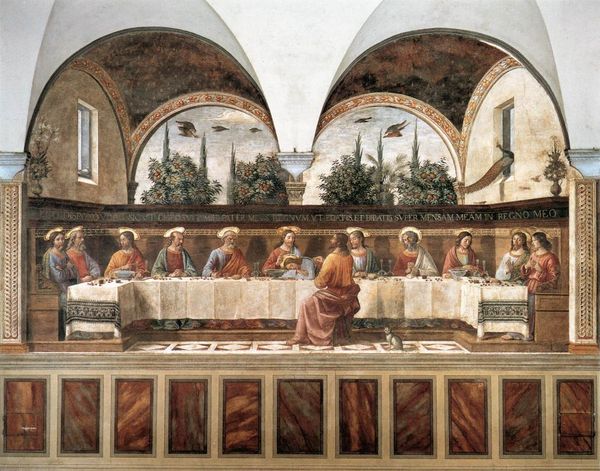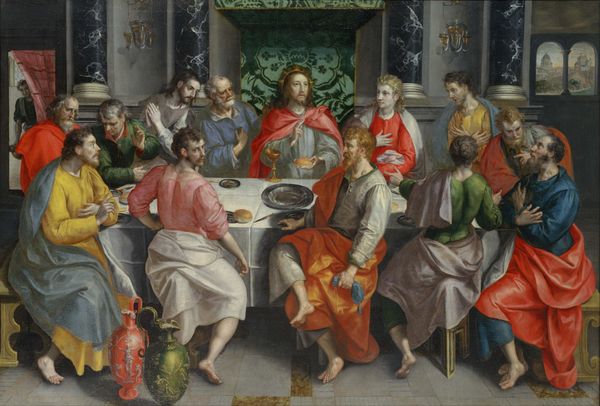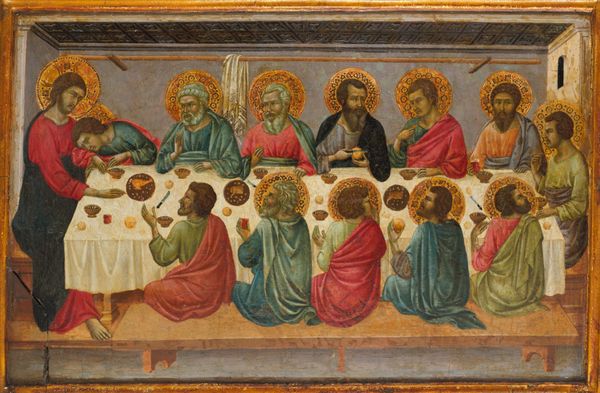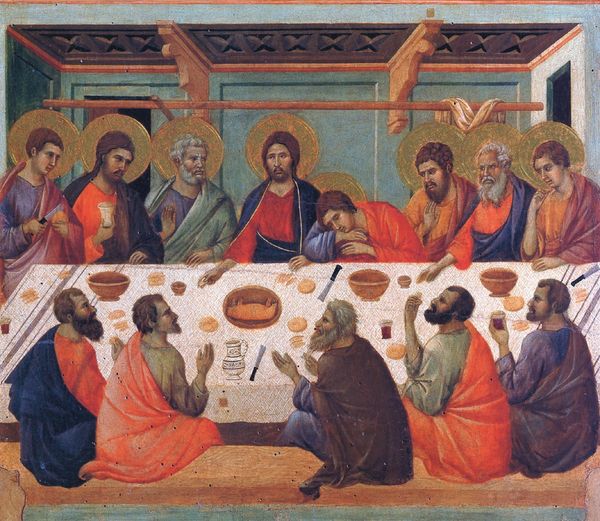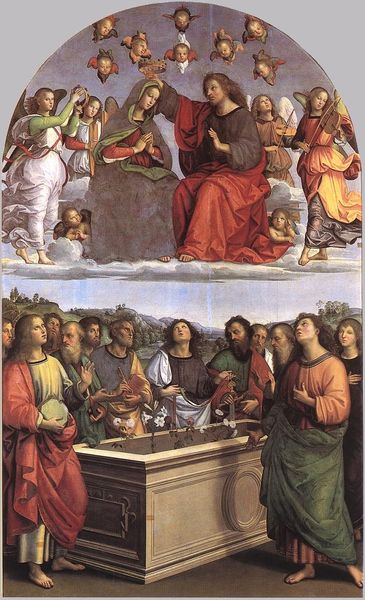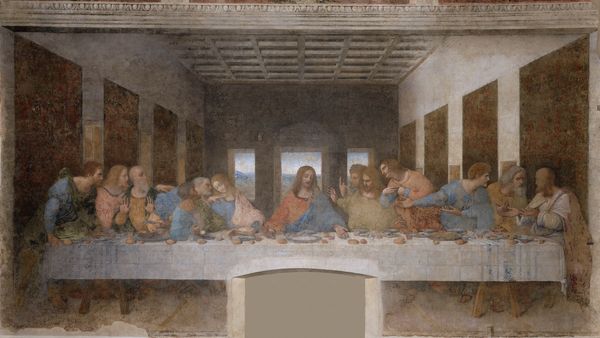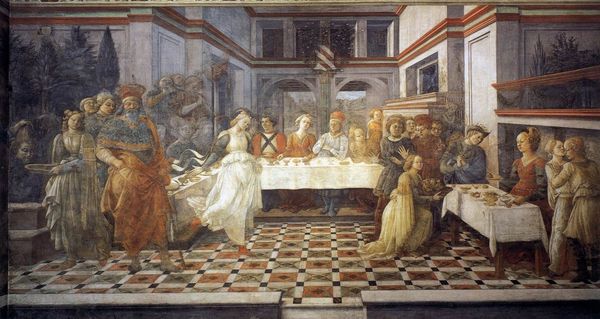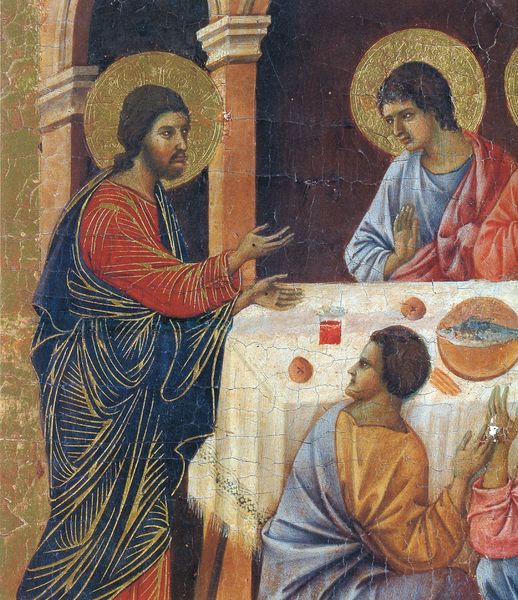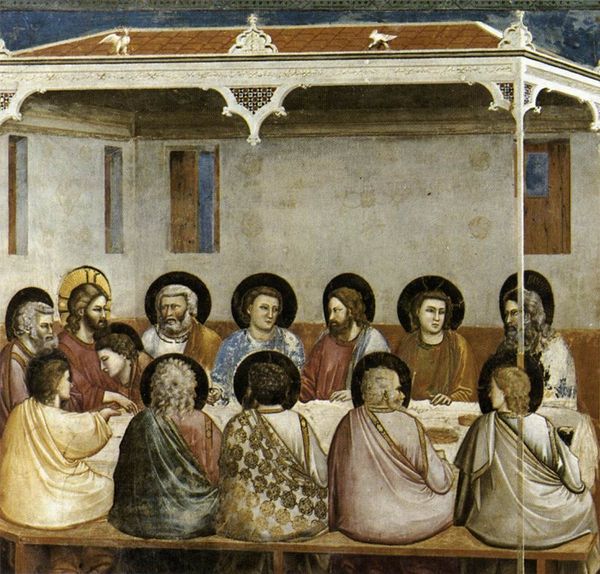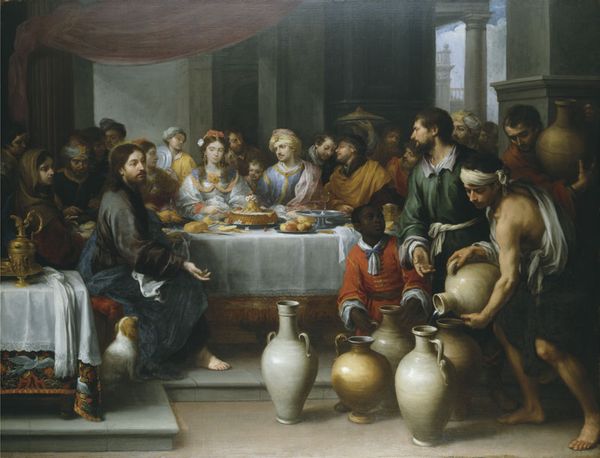
tempera, oil-paint, fresco, mural
#
portrait
#
narrative-art
#
tempera
#
oil-paint
#
landscape
#
figuration
#
fresco
#
jesus-christ
#
arch
#
christianity
#
history-painting
#
italian-renaissance
#
mural
Dimensions: 400 x 880 cm
Copyright: Public domain
Curator: This piece presents a relatively straightforward depiction of the Last Supper. Take a look at Domenico Ghirlandaio’s mural created around 1480, likely a fresco, which presents the famous scene in a distinctly Florentine style. Editor: My immediate impression is one of reserved elegance. The colors are muted, the expressions restrained, but the table is a riot of textures, the craftsmanship looks very deliberate. I notice the inclusion of precise, clearly arranged foods as part of the scene. Curator: It’s fascinating how Ghirlandaio merges the sacred with the quotidian. Considering the mural's placement, likely in a refectory or communal dining space, what social function does such accessible, human-scaled depictions play? The act of consuming food is right there in front of you. Editor: Absolutely. These depictions served as not just aesthetic decorations but reminders, shaping behavior within communal spaces through symbolic means, and reinforcing an active participation. This type of careful rendering—especially when it depicts a communal table in real time, implies labor and material wealth. Curator: Yes! Also note how he integrates nature. The trees beyond the windows feel like tapestries, almost. It gives a peaceful air but may point to ideals around wealth, the material realities for patrons and viewers. I want to consider what statement these choices made about civic duty, because it gives viewers an example. Editor: And the setting! That ornate ceiling and window show social station, yes, and the birds hint to themes around sacrifice and religious belief as they enter the setting. The historical context and social context—Italian Renaissance culture focused so intensely on both God and the family—clearly inform every part of Ghirlandaio’s craft. Curator: Right, the painting itself becomes a reflection on religious life in tandem with community investment. Thank you for this discussion; it will give me plenty to think about moving forward. Editor: And thank you for lending your insight, too! Thinking of the craftsmanship adds nuance to my understanding of Florentine religious art and society at this period.
Comments
No comments
Be the first to comment and join the conversation on the ultimate creative platform.
